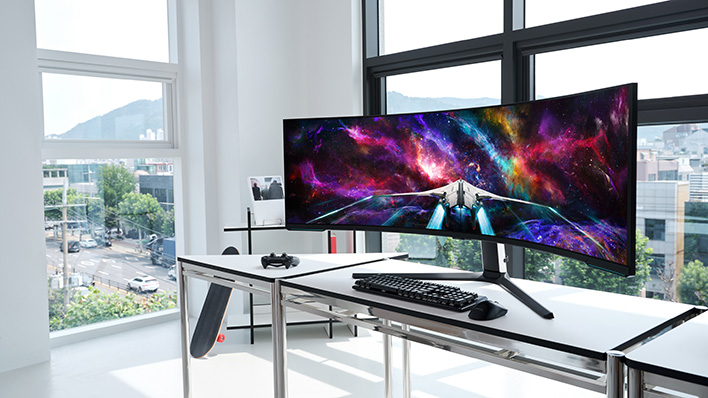GeForce RTX 4090 Found Unable To Hit 240Hz On Samsung's Odyssey Neo G9 Gaming Monitor
This problem is quite shocking to see, especially since NVIDIA has been the market leader in computer graphics for years. But funnily enough, the problem boils down to one “tiny” spec difference that NVIDIA’s latest graphics cards cannot match in reference to AMD’s latest GPUs. That difference is the DisplayPort version each manufacturer supports. AMD’s latest GPUs support the latest bleeding-edge DisplayPort 2.1 standard, while NVIDIA’s RTX 40 series GPUs are stuck on DisplayPort 1.4a.
It is a mystery why NVIDIA neglected to update its RTX 40 series graphics cards to any recent standards. Upgrading to DisplayPort 2.1 would have been impossible since it launched after the RTX 4090 made its debut. However, NVIDIA could have easily introduced DisplayPort version 2.0 which launched several years ago in 2019. With resolution support of up to 16K with Display Stream Compression (DSC) 1.2a, DisplayPort 2.0 would have enough bandwidth to push Samsung’s dual 4K resolution gaming monitor, even at 240Hz.

Nonetheless, it is still quite annoying that NVIDIA’s latest GPUs can’t run Samsung’s bleeding edge gaming monitor at its maximum refresh rate through one cable when AMD’s competing GPUs can. Even if none of the best graphics cards will regularly achieve 240FPS at double 4K resolution in the latest AAA titles, someone paying $1500 for an RTX 4090 probably expects their GPU to run anything he/she throws at it — from a resolution and refresh rate perspective.
For details on the monitor itself, be sure to check out our previous coverage. Samsung’s new Odyssey Neo G9 is one of the most advanced gaming monitors on the market today, sporting the size and resolution of two 240Hz 4K monitors, and features most of Samsung’s latest technology including Quantum Matrix technology and a Quantum Mini-LED panel for super rich and vibrant visuals.

